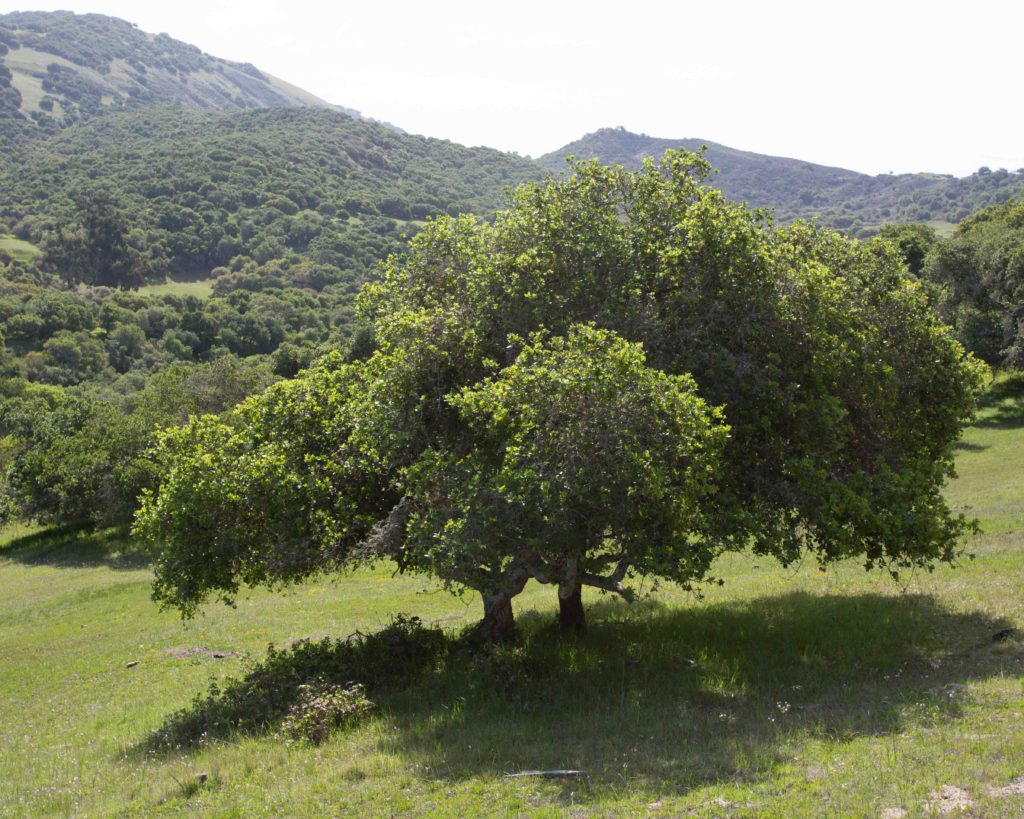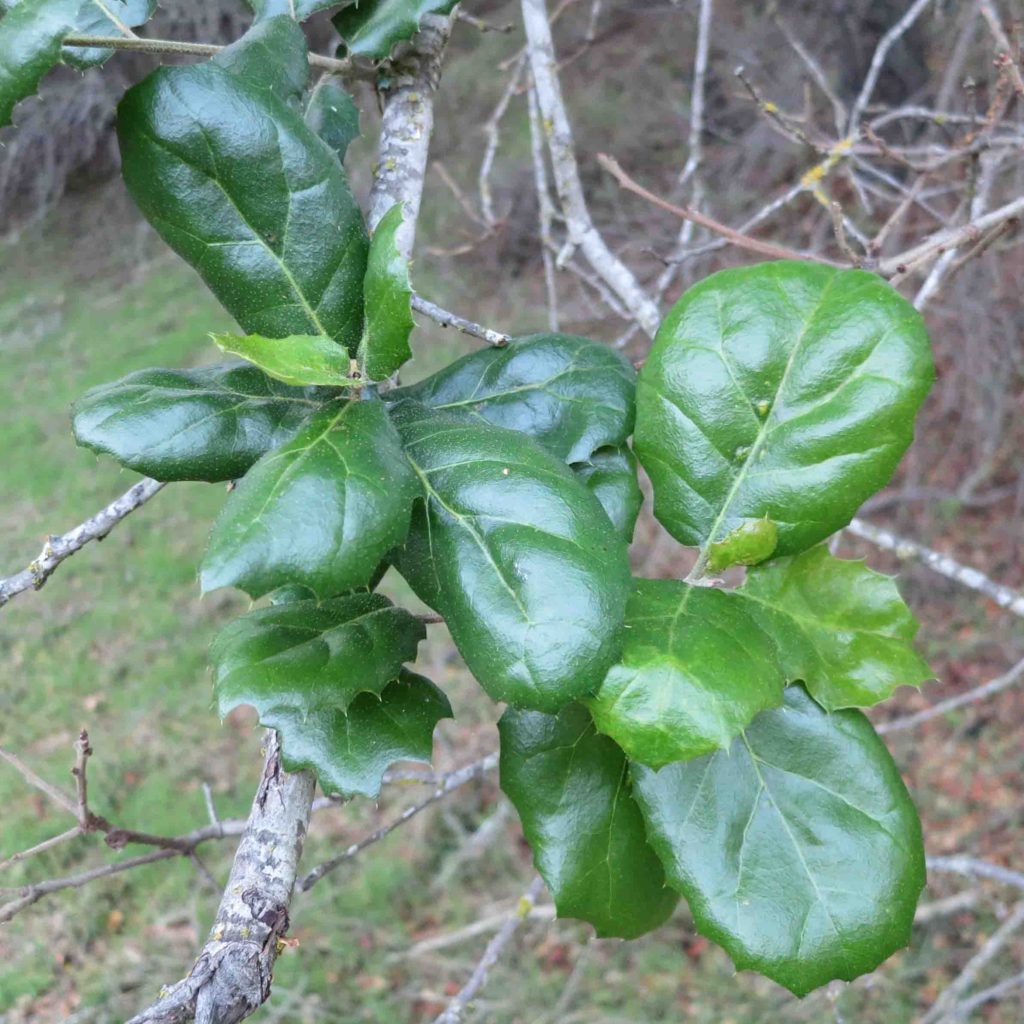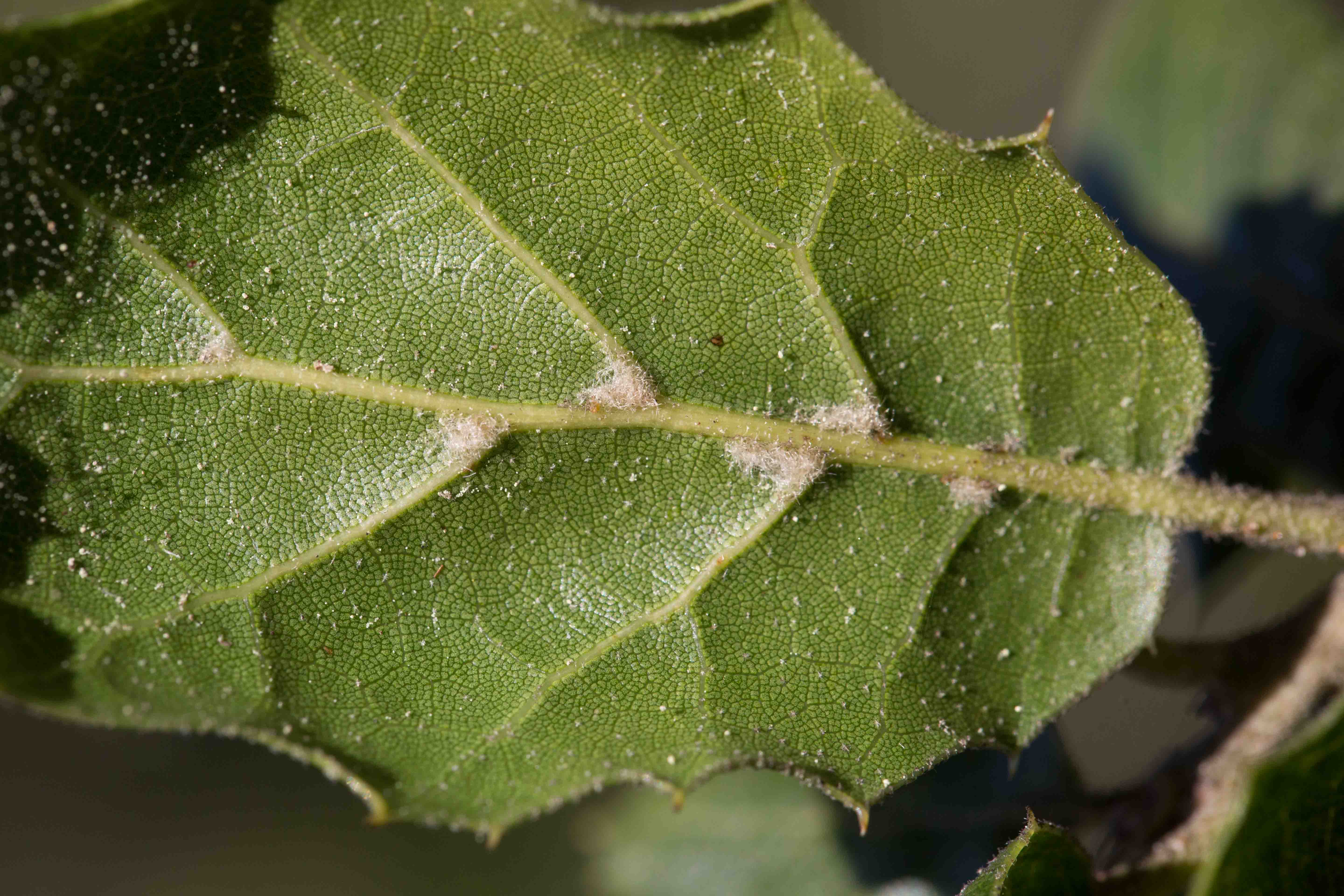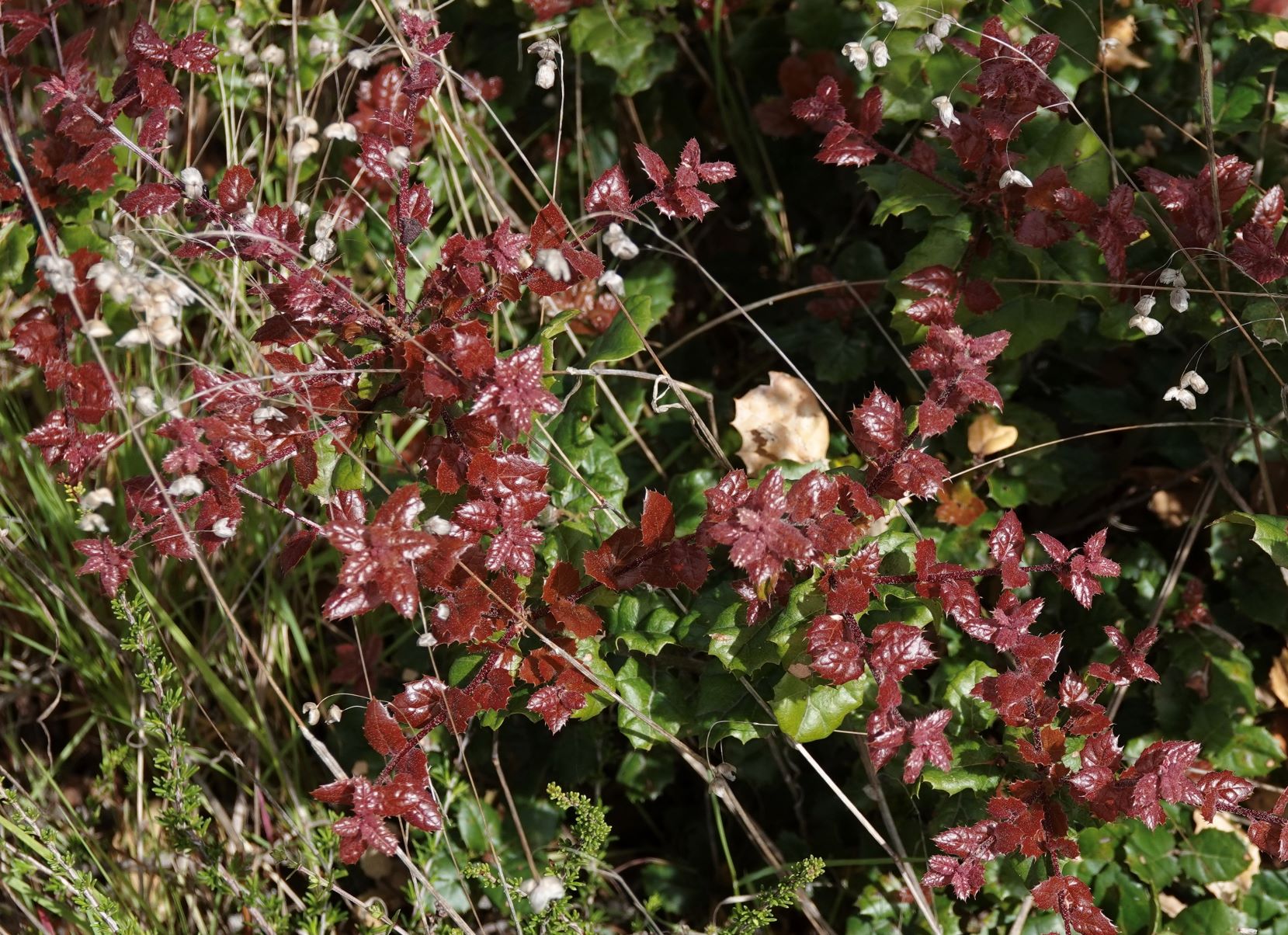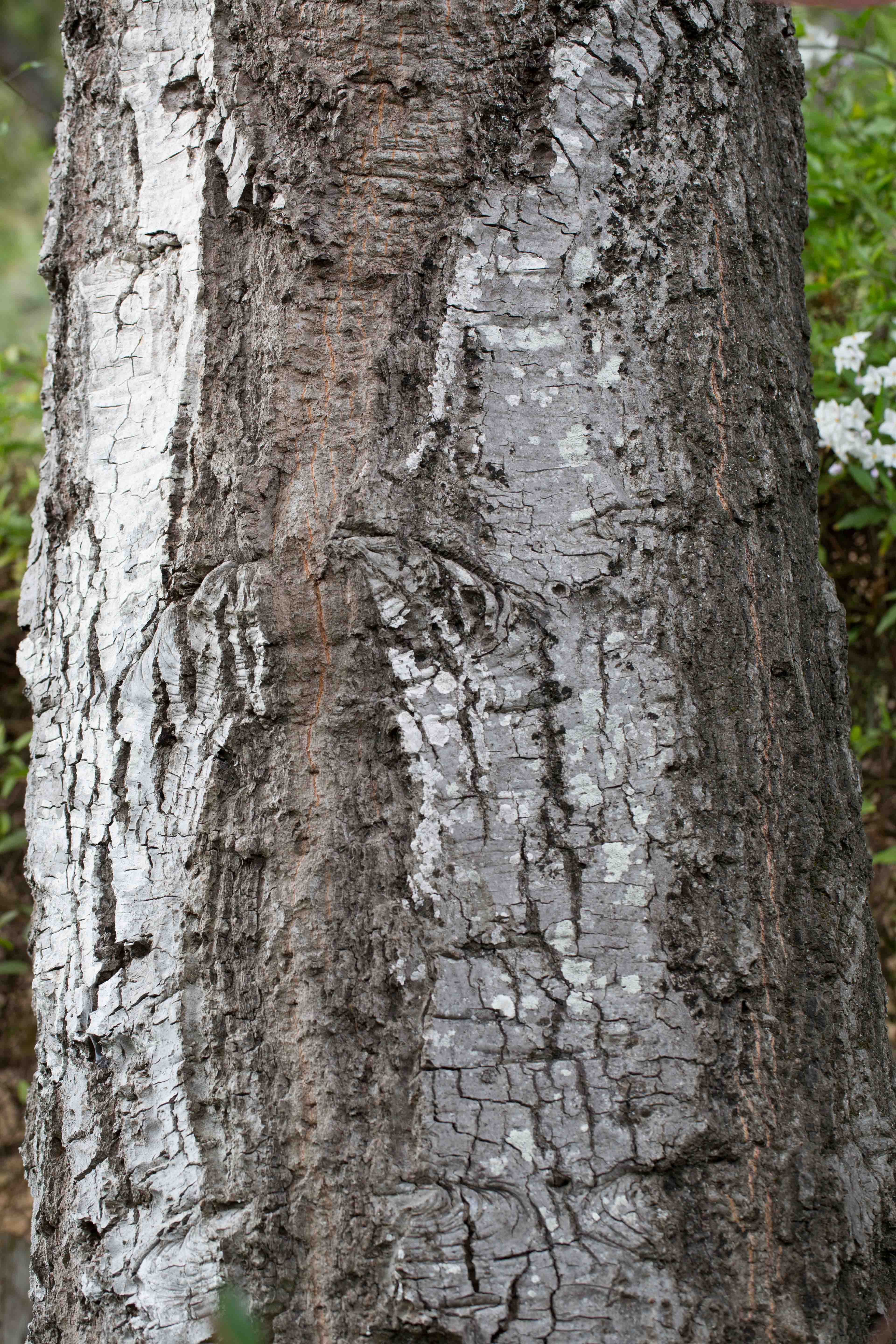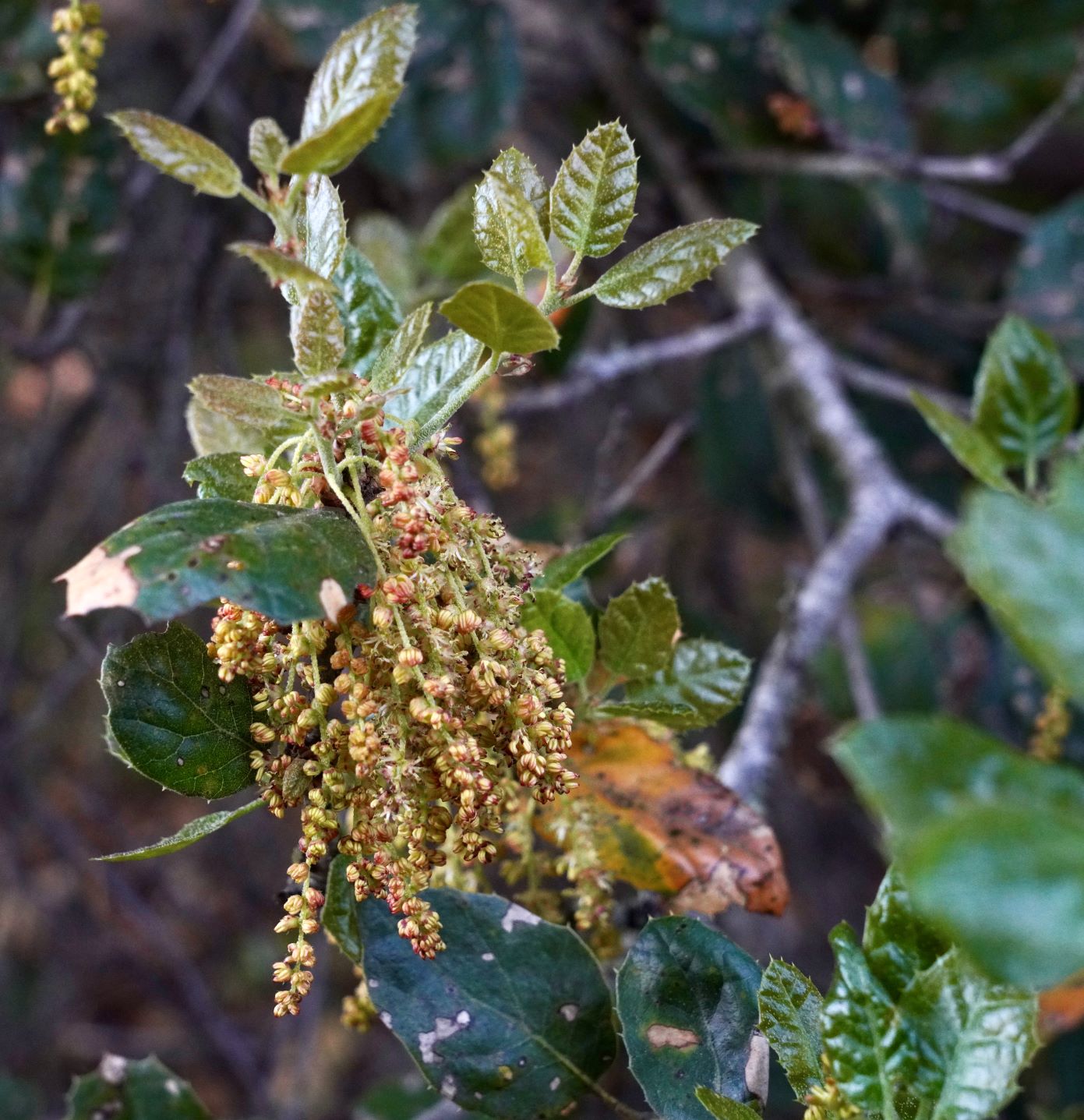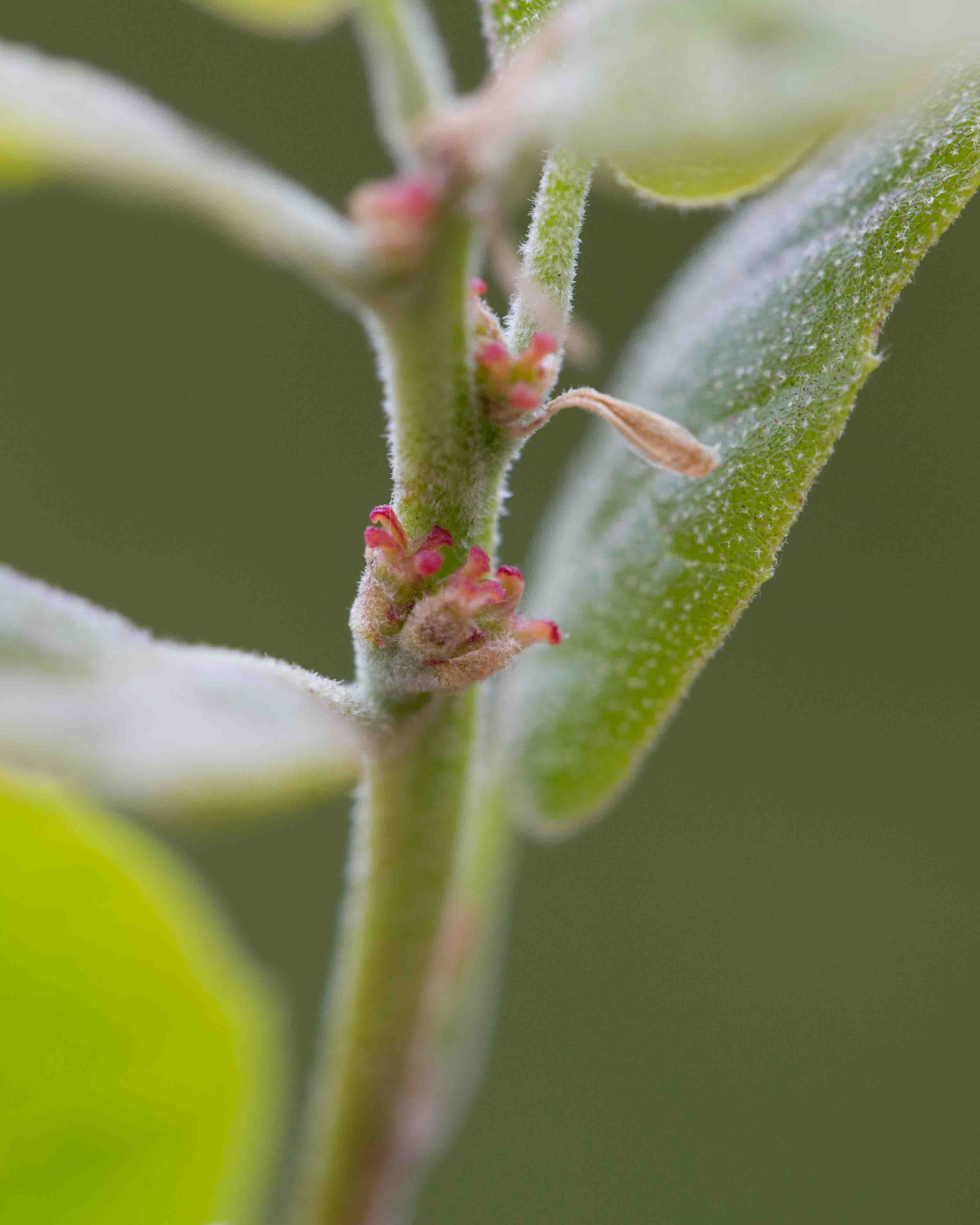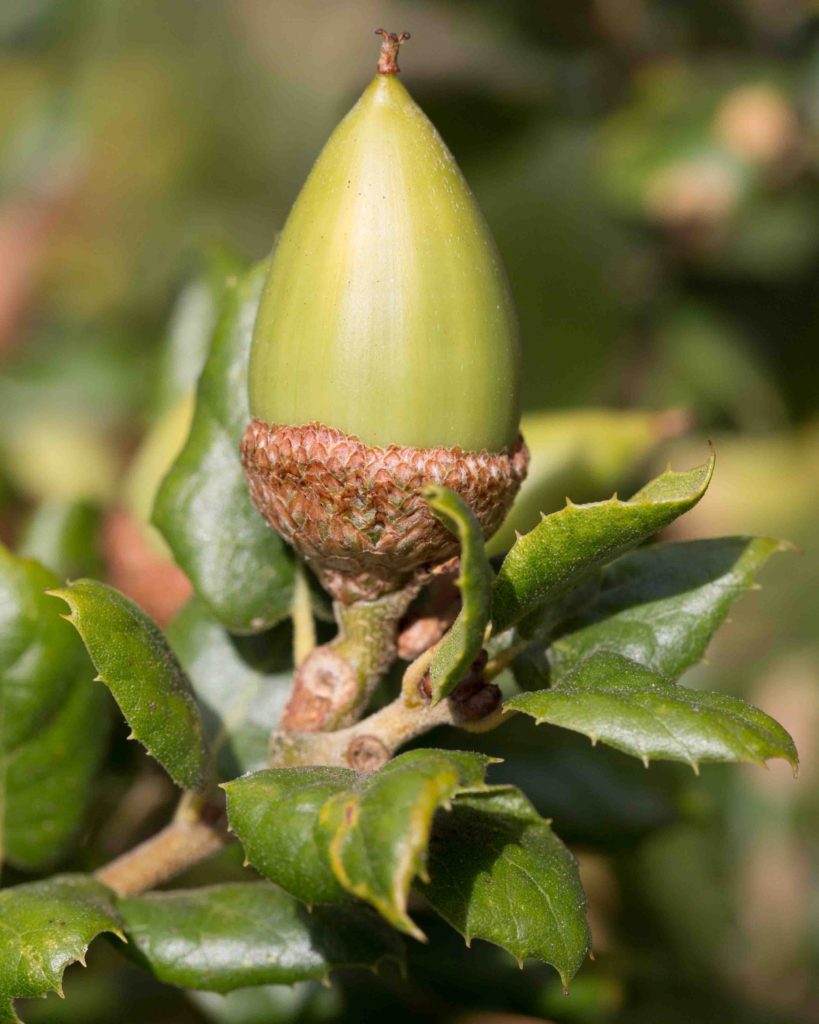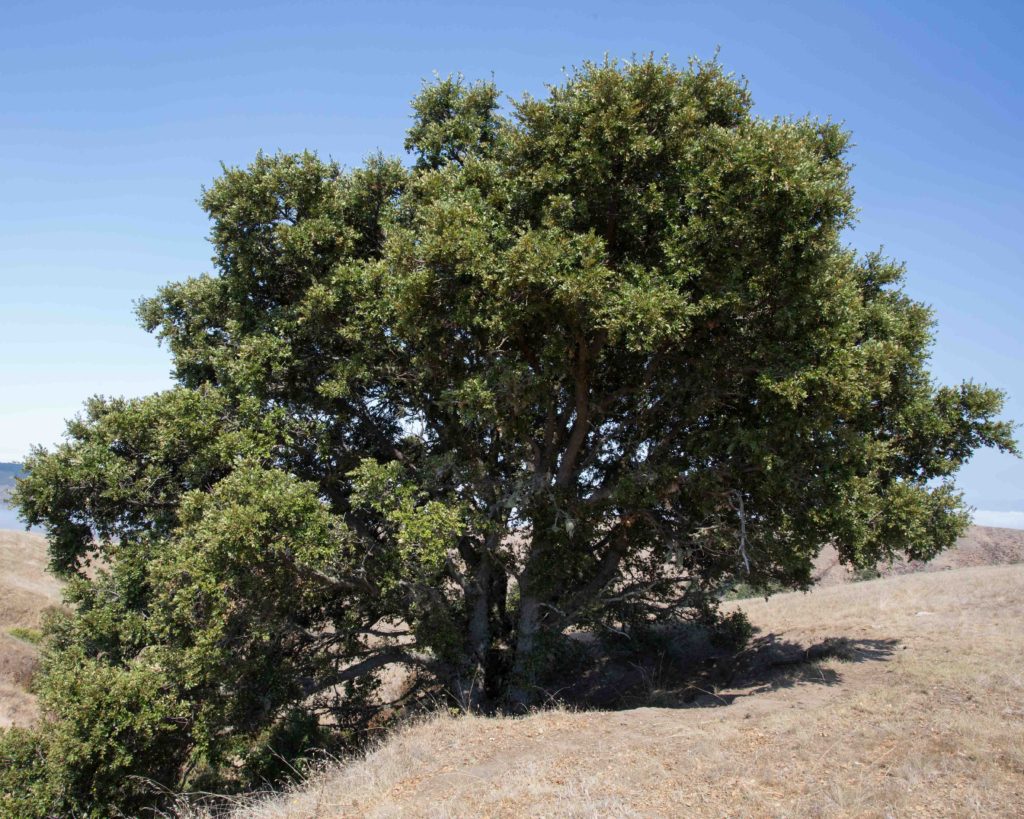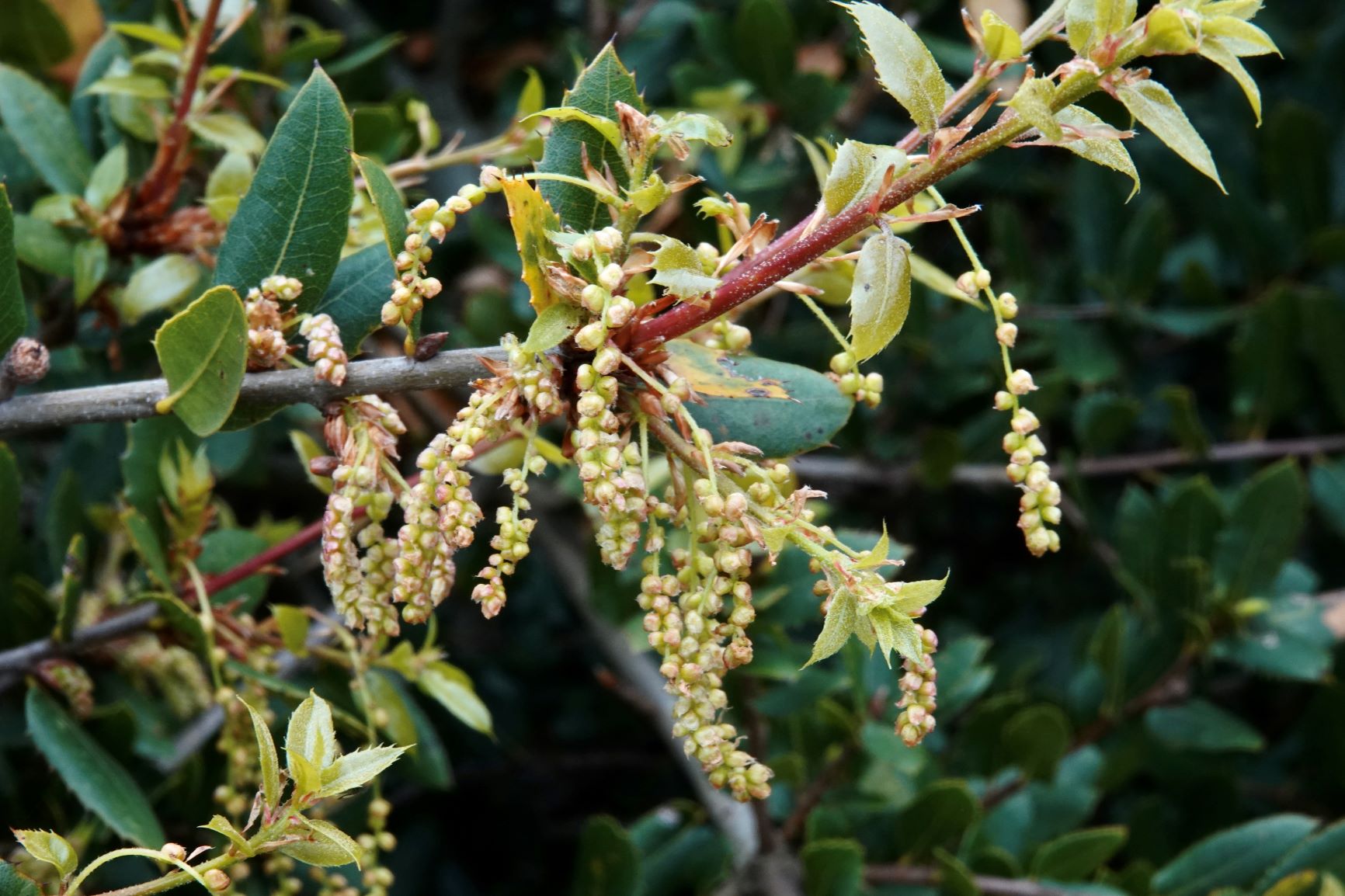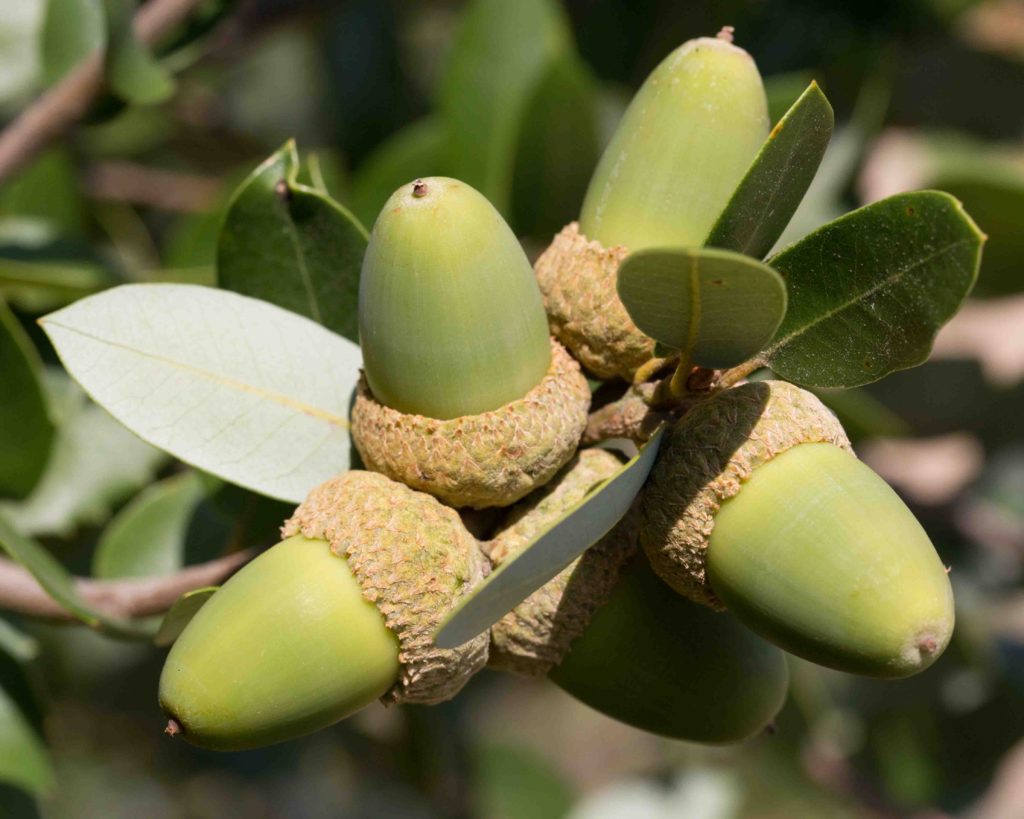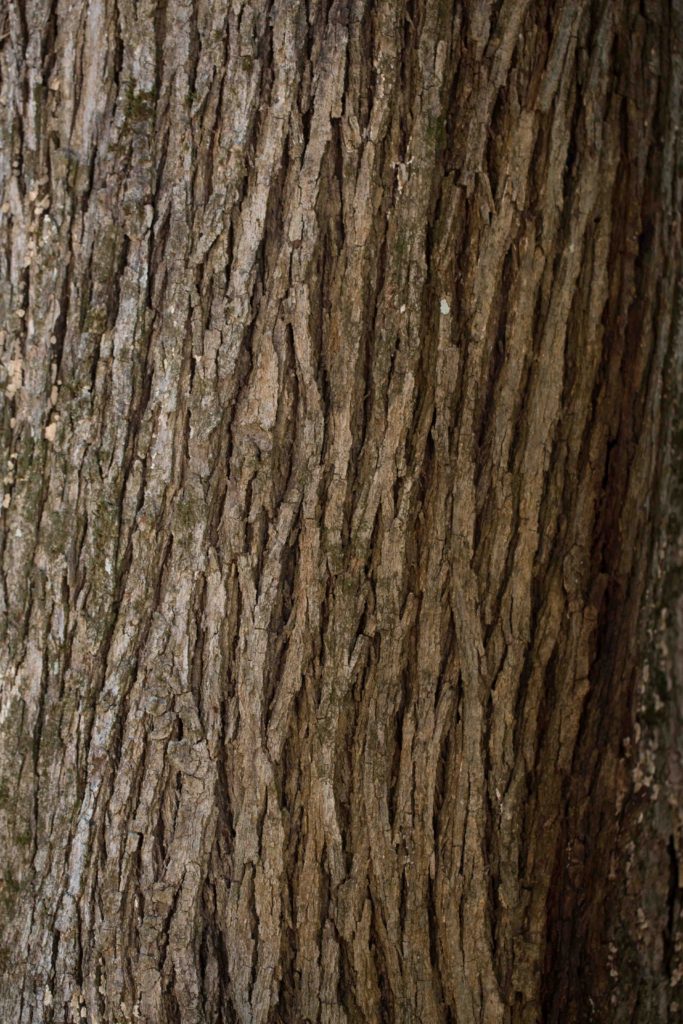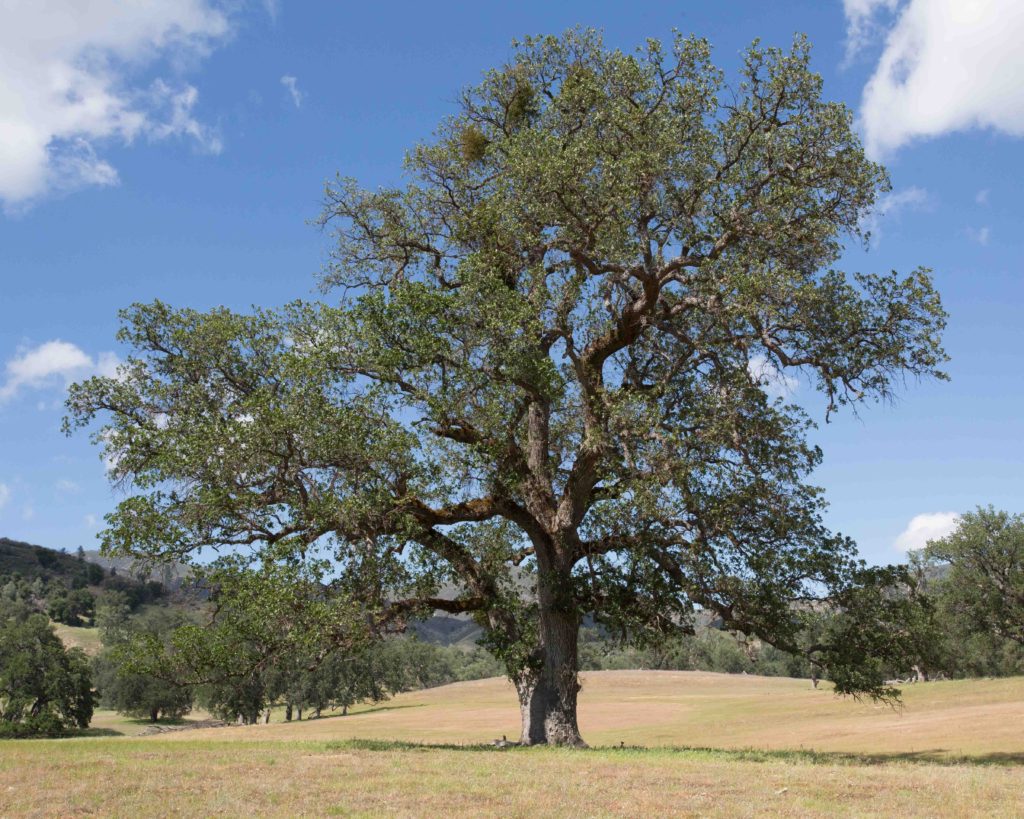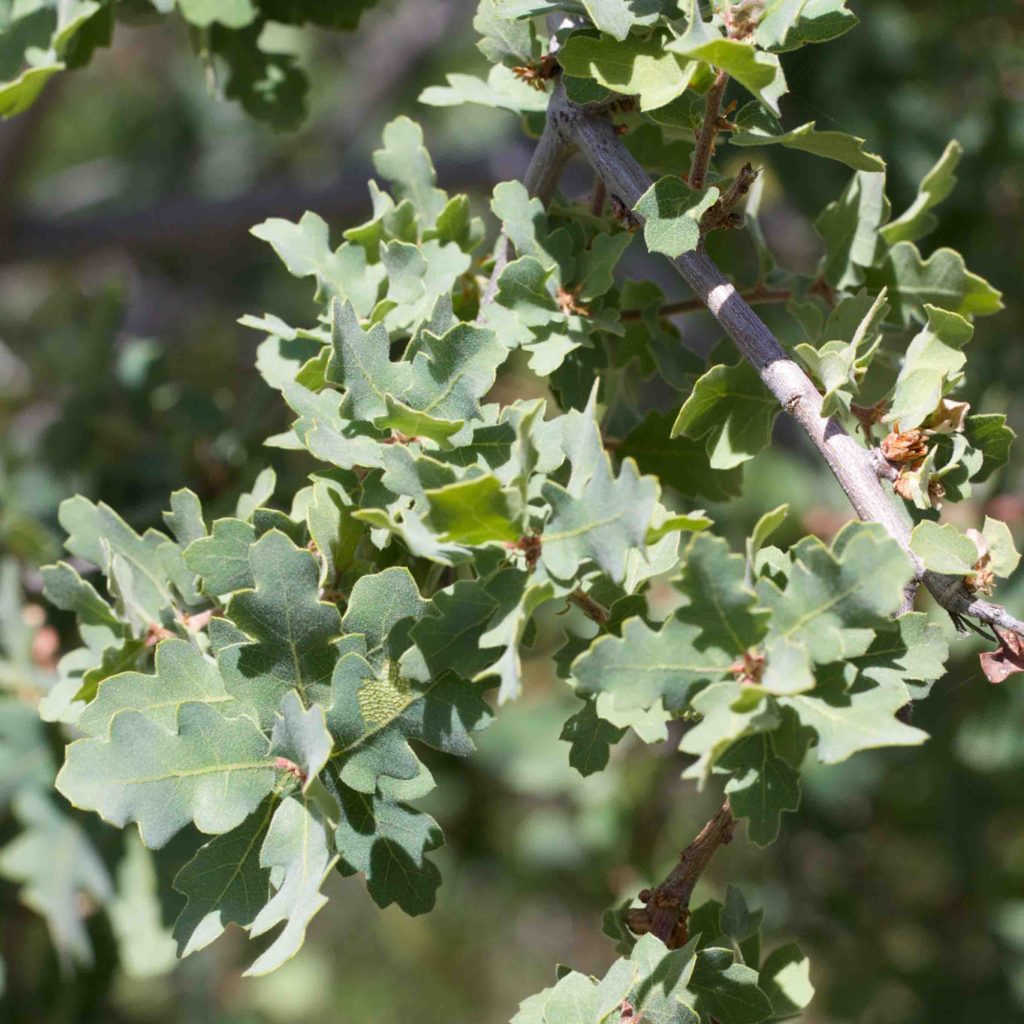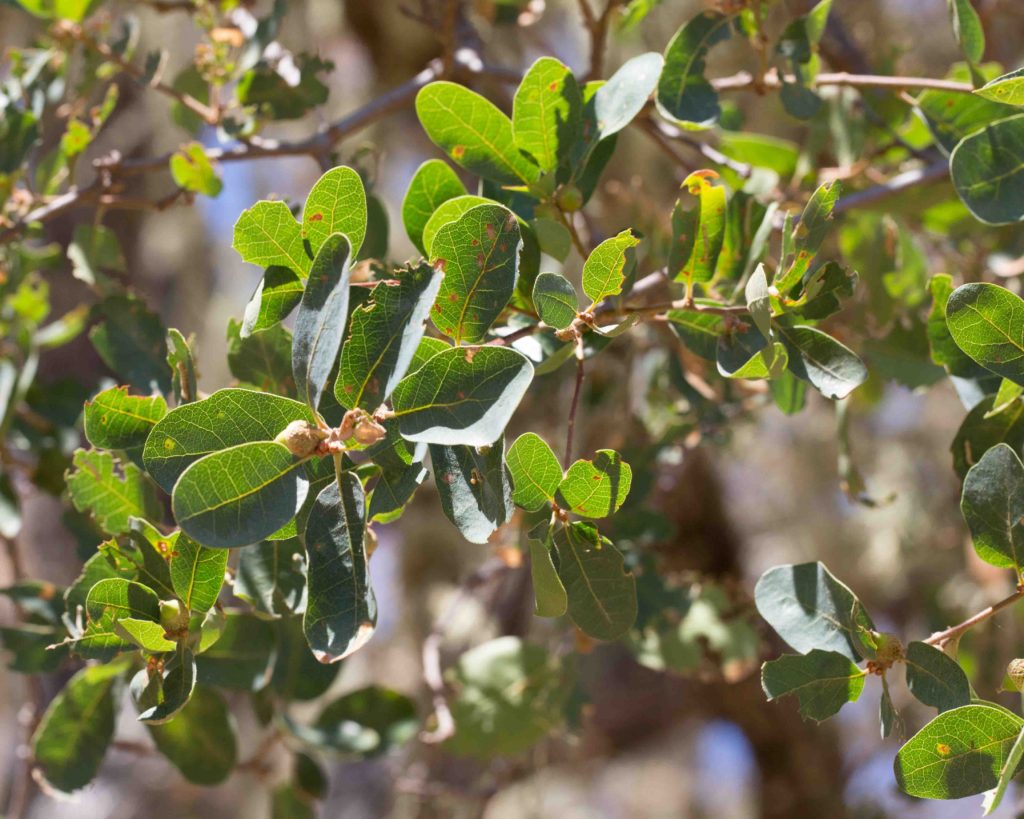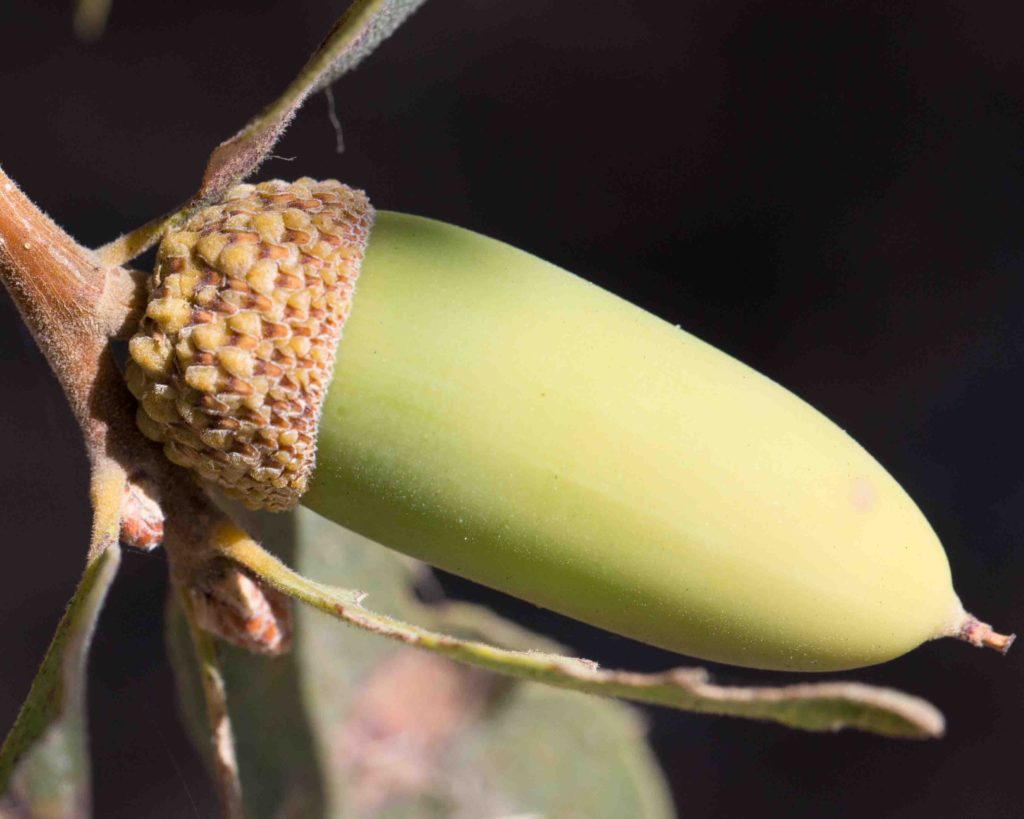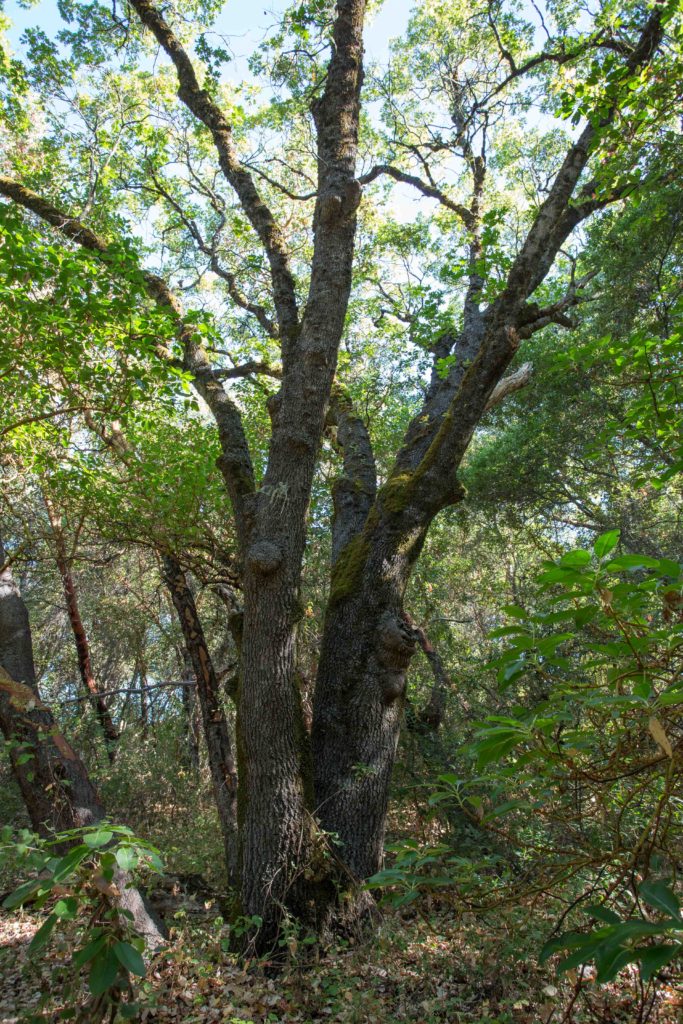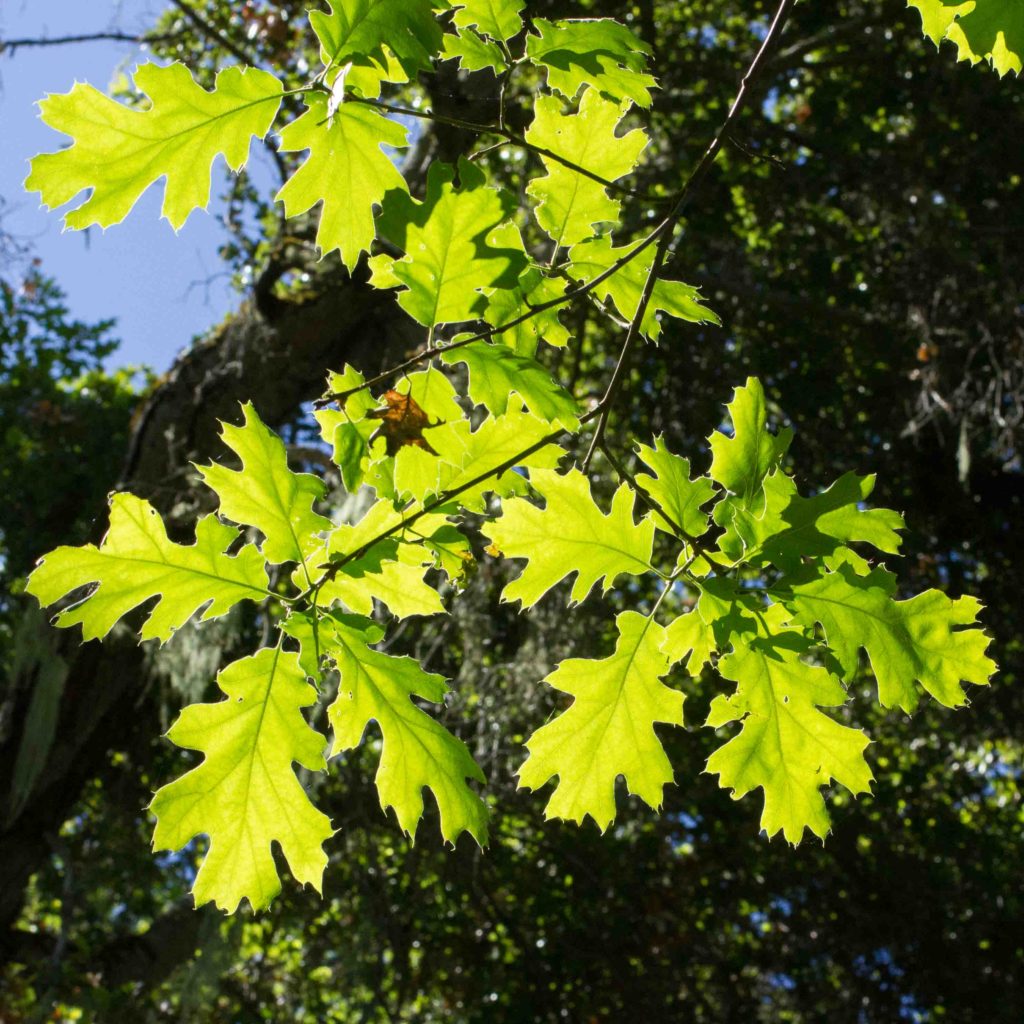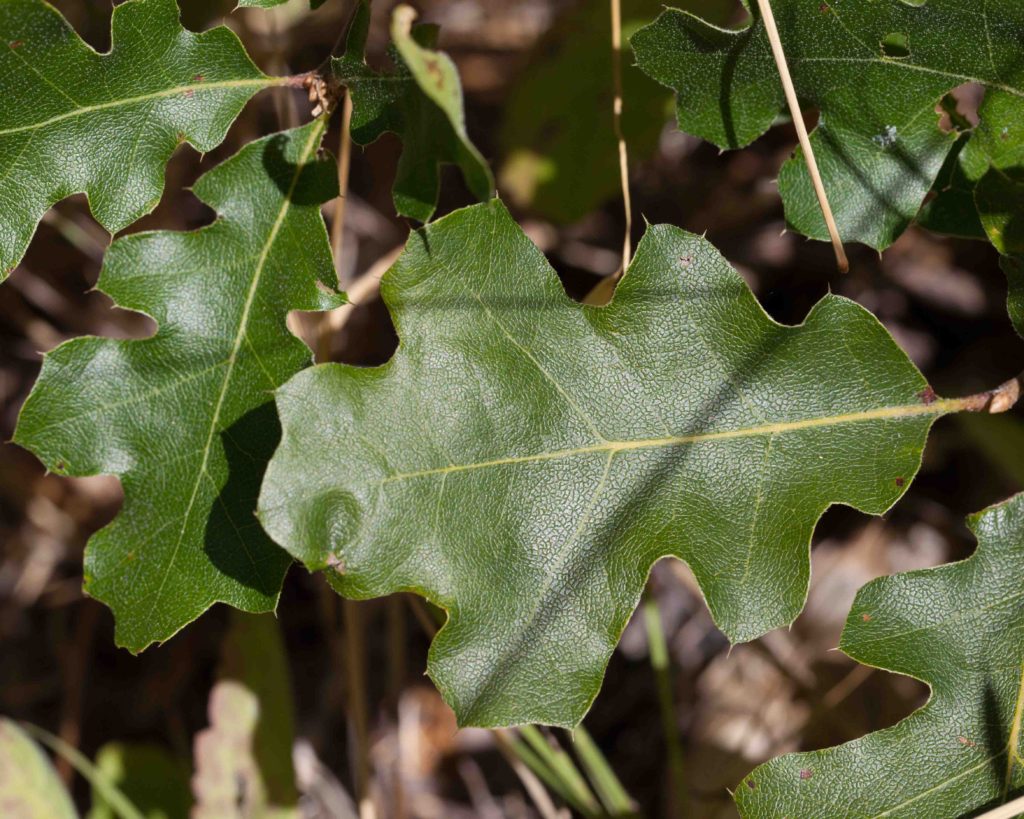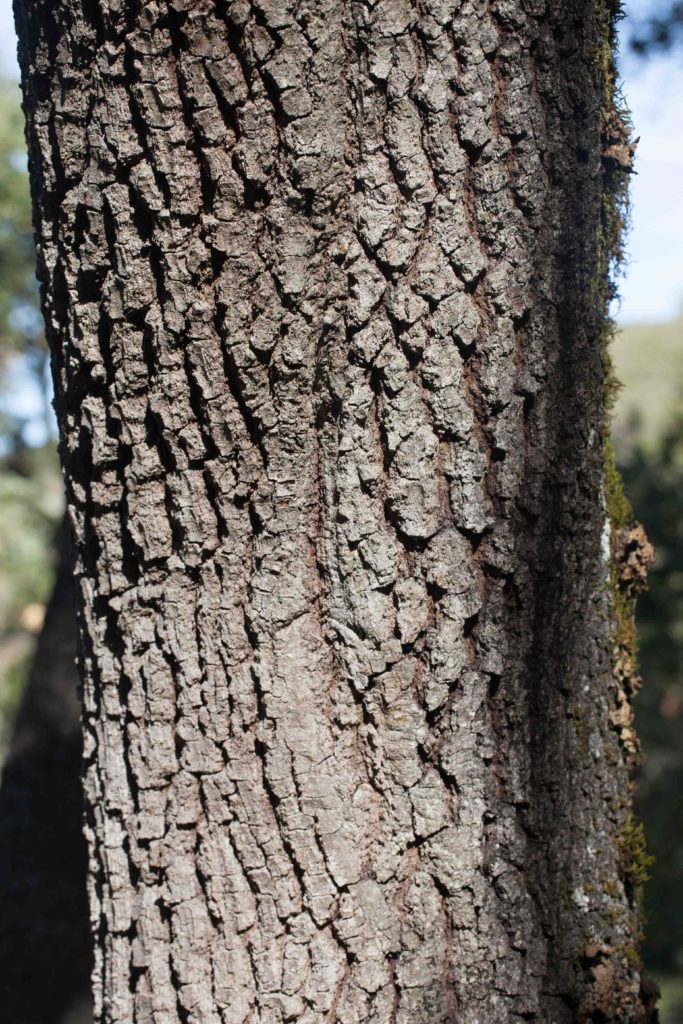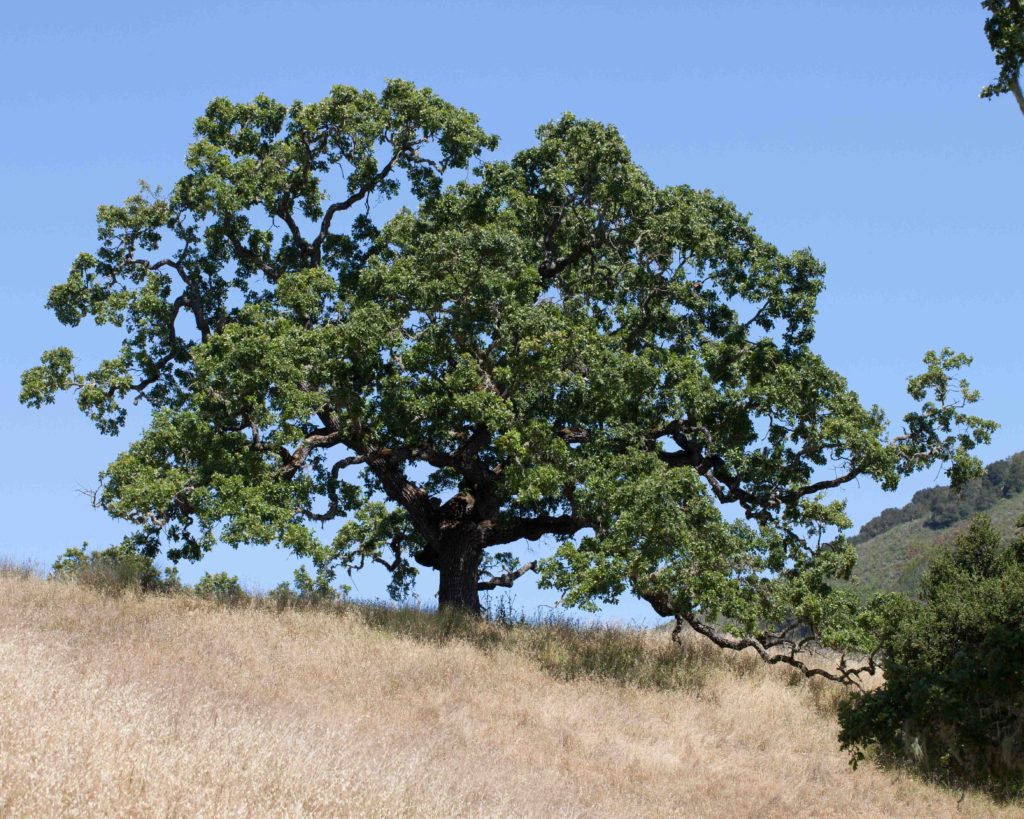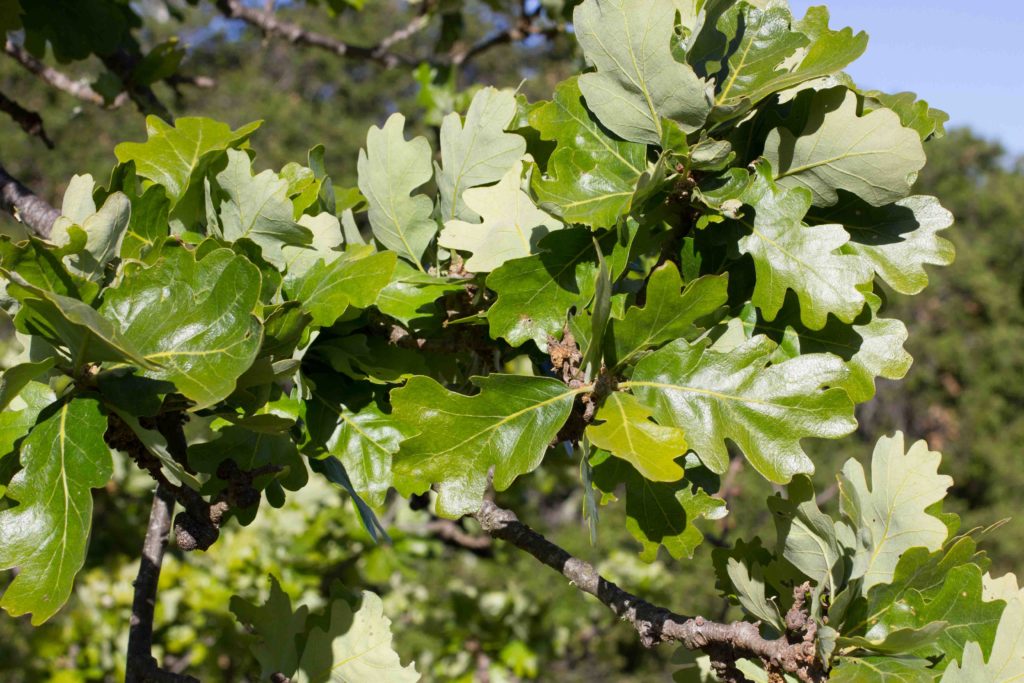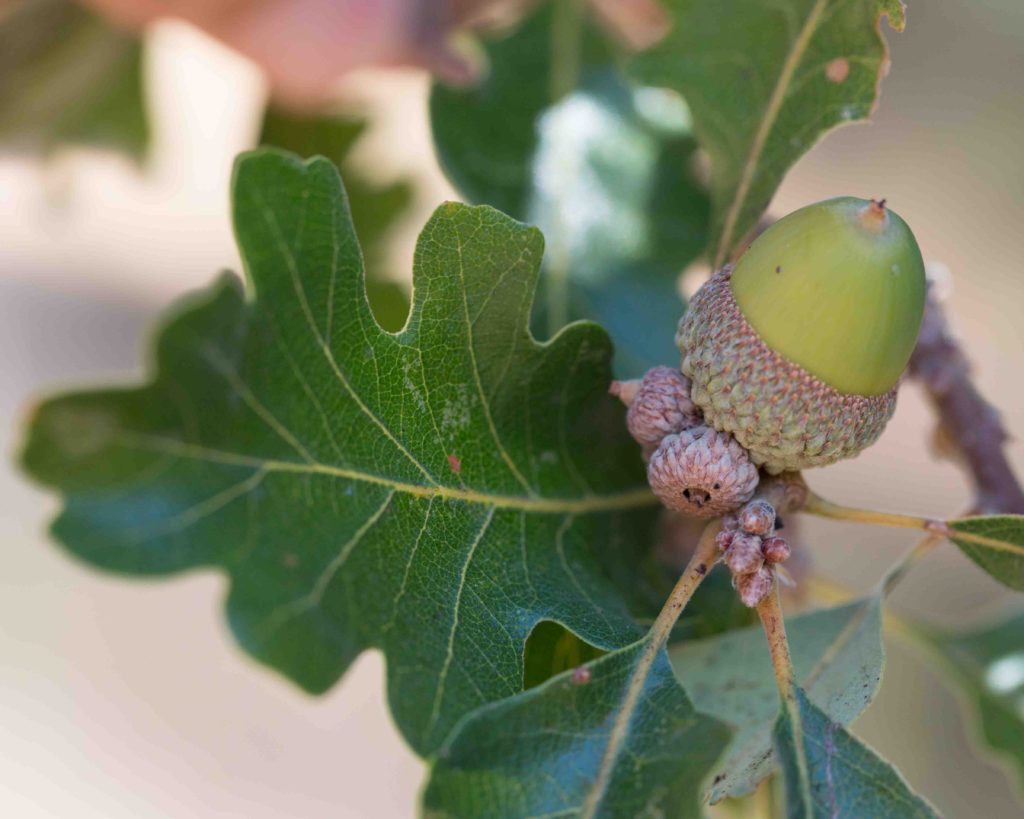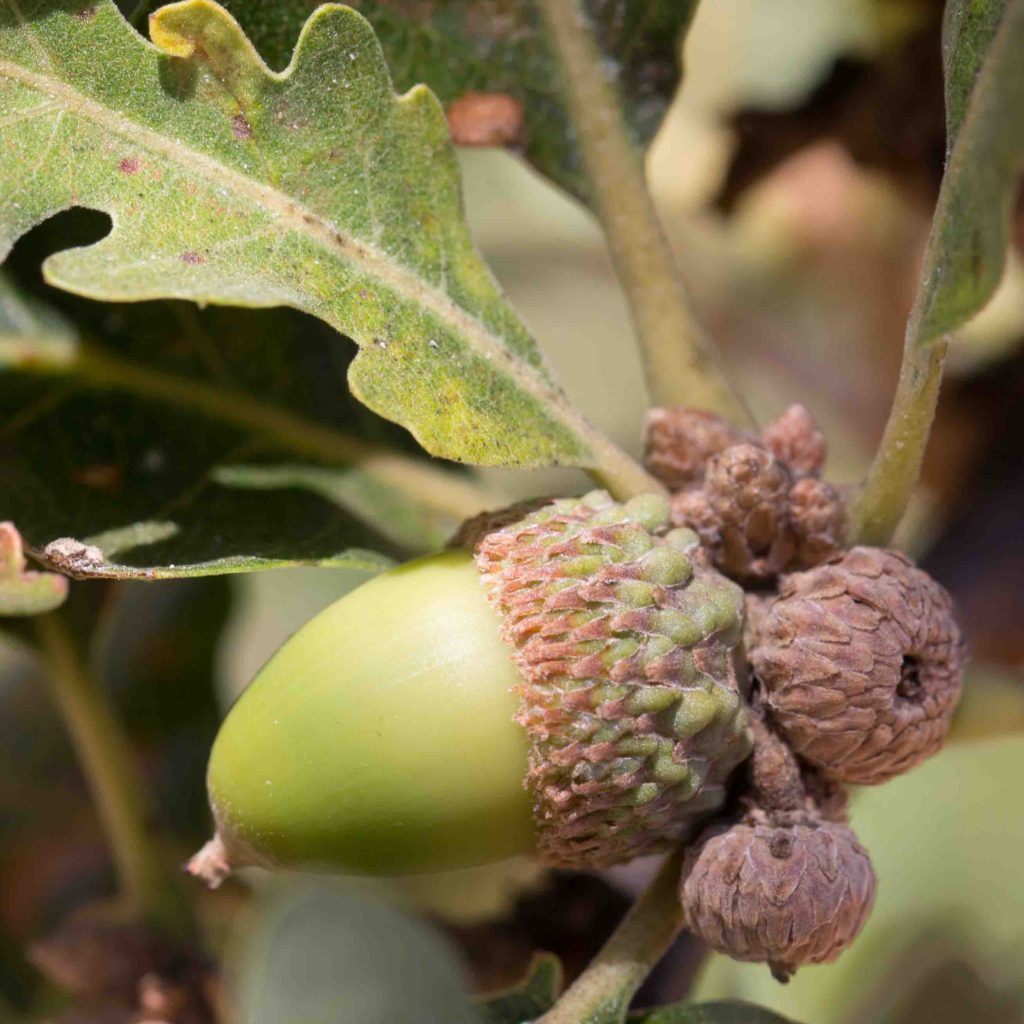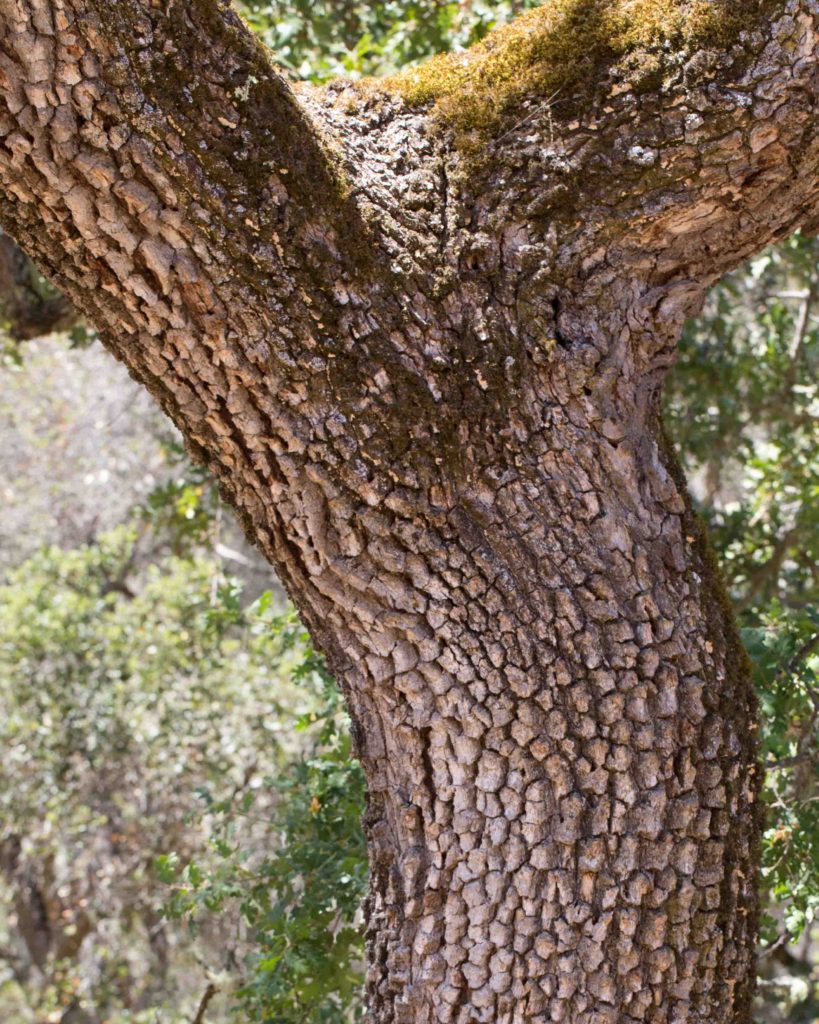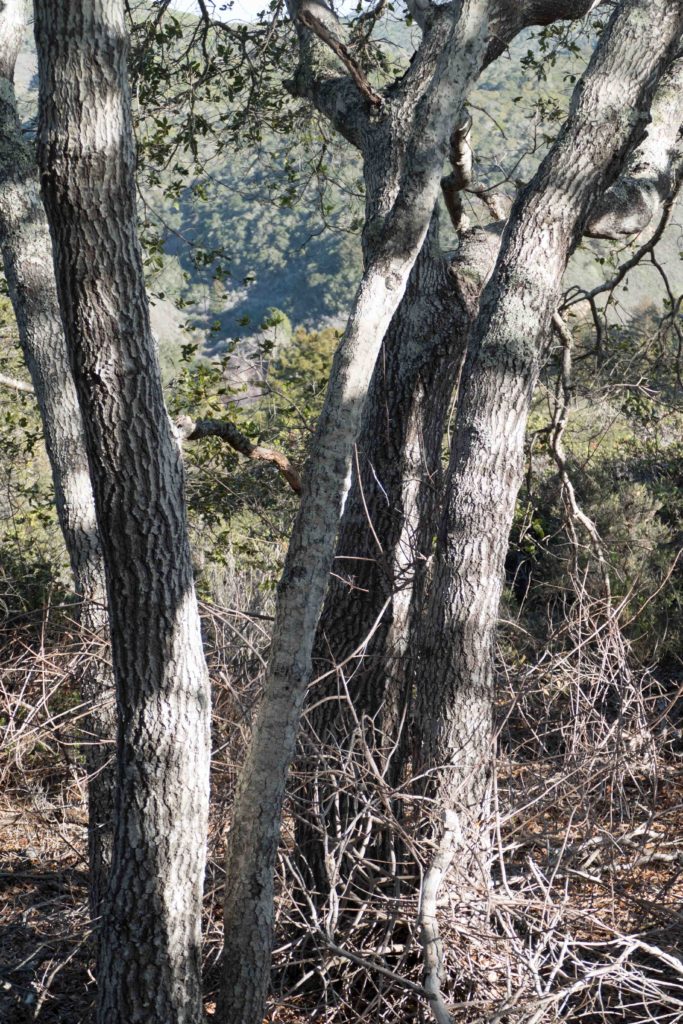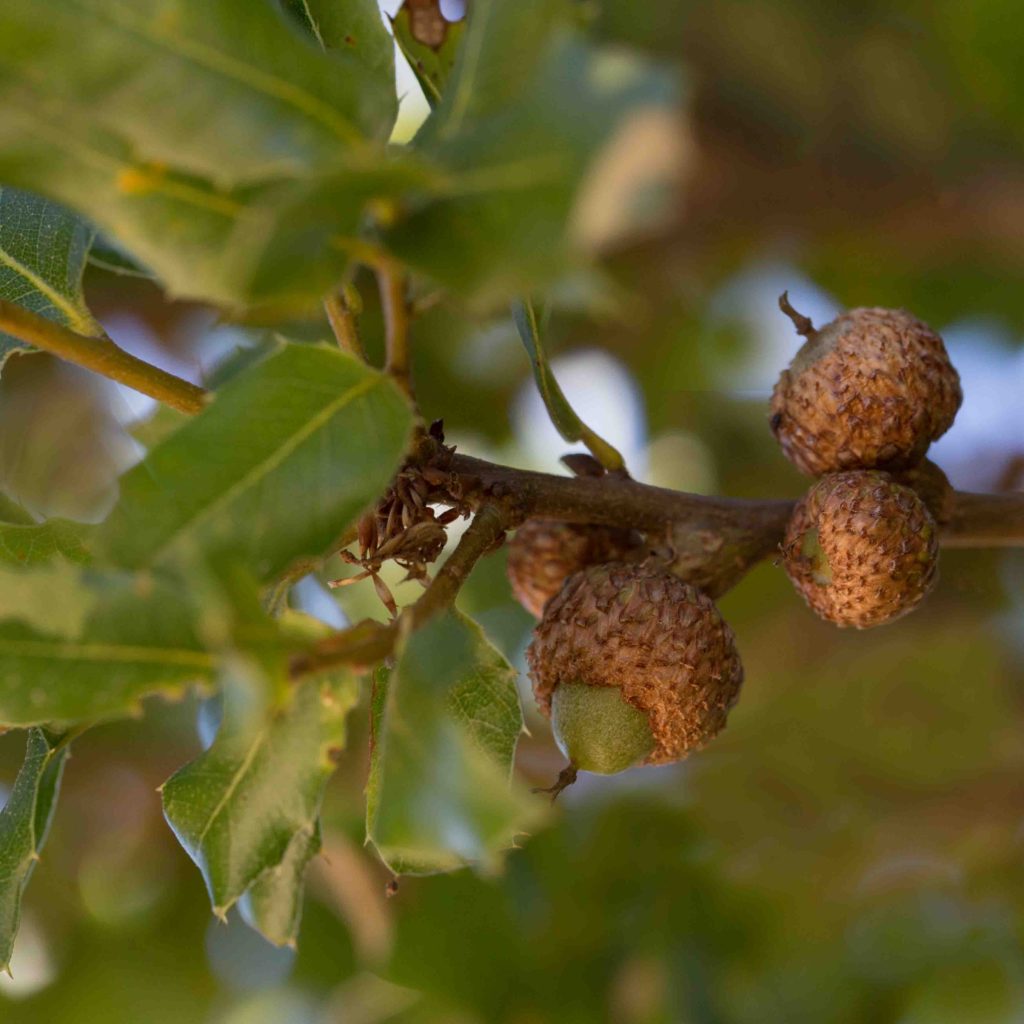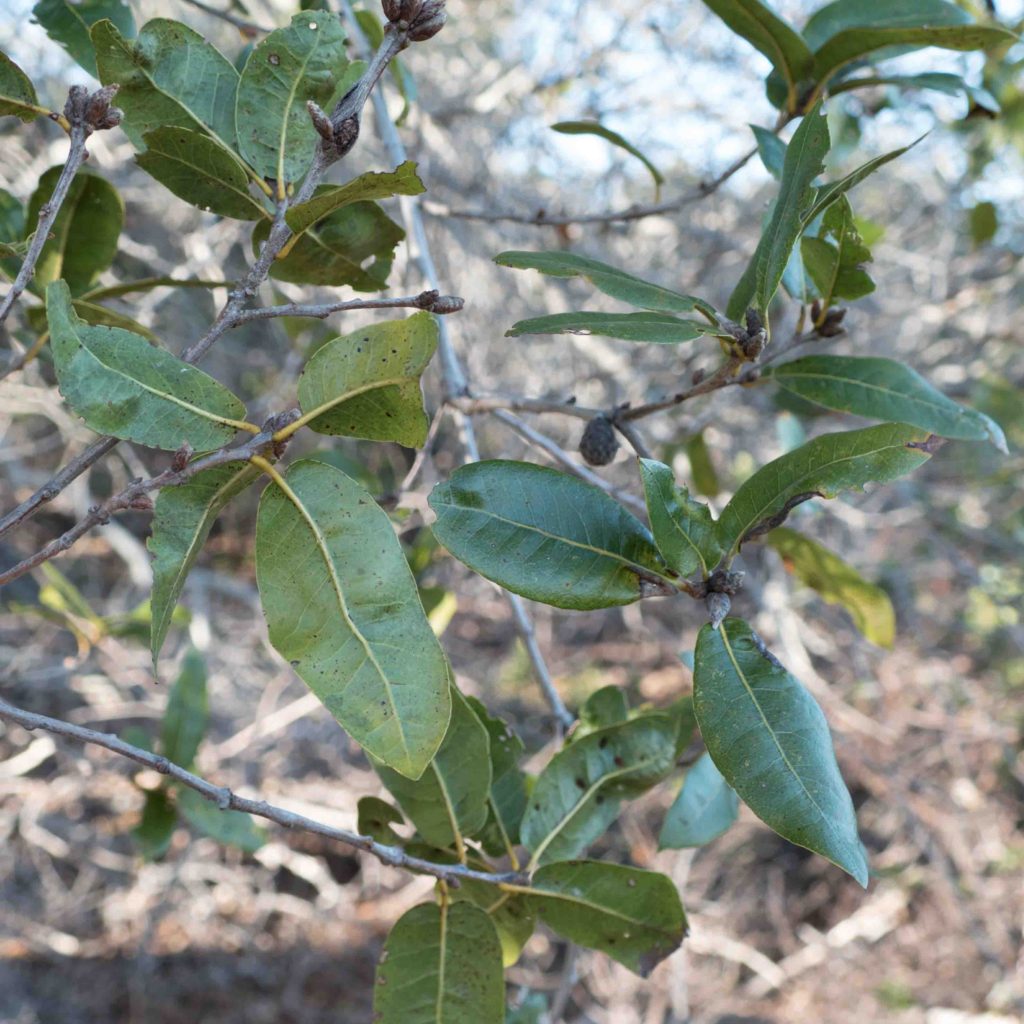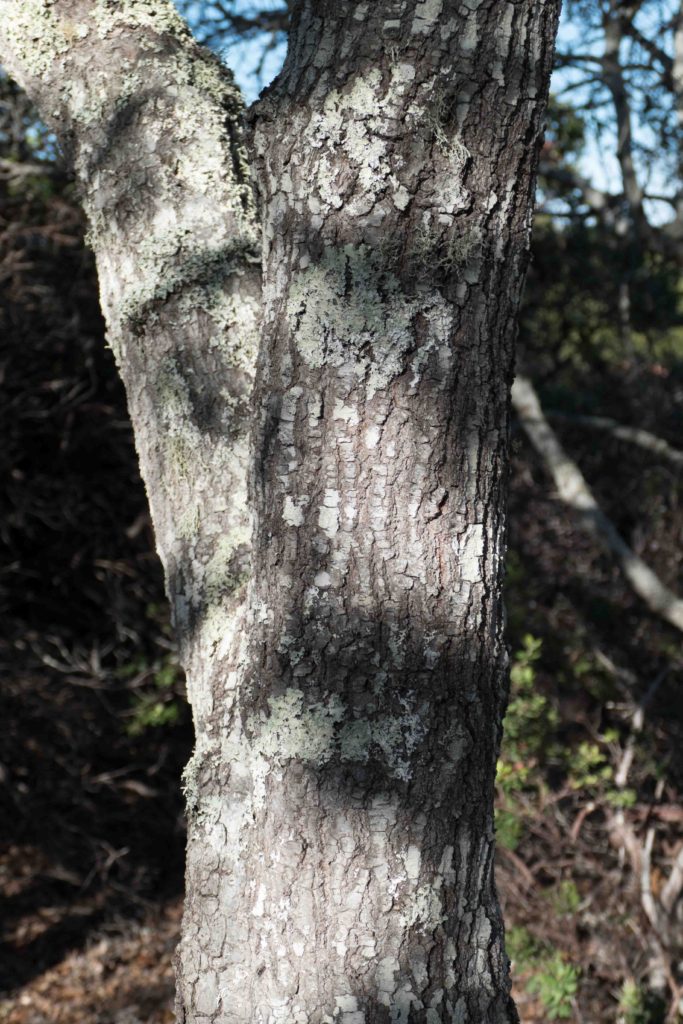Fagaceae: Beech Family — Quercus (Oak)
Oaks can be challenging. Those found in Monterey County are in three groups: Red (or Black) Oaks, Intermediate Oaks, and White Oaks. Red Oaks and Intermediate Oaks have acorns that generally mature over a 2 year period (Coast Live Oak is an exception to this rule). White Oaks have acorns that mature in a single season. Most Red Oaks and Intermediate Oaks are evergreen (California Black Oak being the exception). White Oaks may be either evergreen or deciduous. To complicate matters, hybrid forms are common (some named, many not). So individual trees can be difficult to identify with certainty. All oaks are monoecious, with conspicuous male flowers. The female flowers are hard to see, found in the axils of the leaves near the tips of the new stems.
Coast Live Oak – Quercus agrifolia var. agrifolia
Height:
< 25 m
Habitat:
Valleys, slopes, mixed woodland
Section
Red (black); evergreen
Notes:
This is by far the commonest oak to be found in coastal and foothill woodlands. It is not particularly tall, but often wide spreading with a dense, hemispherical crown. The leaves are very tough, dark green above and slightly paler below, widely elliptical to round, and with spine-toothed tip and margins. New leaves are reddish (see photo #2 below). The upper leaf surface is convex (a critical identifying feature when in doubt), and the lower surface has small tufts of hair in the vein axils, called by some “hairy armpits”. Acorns mature in a single year, the only Red Oak for which this is true. The bark on younger trees tends to be quite smooth, becoming furrowed in age. Photos #3 and 5 below by CJH.
Canyon Live / Maul Oak – Quercus chrysolepis
Height:
< 20 m
Habitat:
Canyons & moist slopes
Section
Intermediate; evergreen
Notes:
This is the most widely distributed oak in California, widespread in the Coast Ranges and the Sierran foothills, varying in size and form according to local conditions. In mixed woodland, with mild temperatures and moderate rainfall, it grows into a reasonably tall tree, with a stout trunk and many large upright branches. Leaves are quite variable, generally oblong to oblong-ovate with an acute tip. Young leaves may be entire or toothed, dark green above and golden below. Mature leaves are distinctly bluish on the lower surface. The acorns are oblong, ovoid or elliptic. The cup is more distinctive, shallow with thick, sometimes tubercled scales, and covered with golden hairs when young. Photo #1 below by CJH.
Blue Oak – Quercus douglasii
Height:
< 20 m
Habitat:
Dry slopes, interior foothills, woodland
Section
White; deciduous
Notes:
This is another widespread oak, which prefers dry conditions. It is less common by the immediate coast, but can tolerate the high temperatures and lower rainfall further inland and in the foothills bordering the Central Valley. It can be recognized by the bluish cast of its leaves, even from a distance. These are oblong to obovate, entire or with shallow lobes, and often have wavy margins. The acorns are ovoid to sub-cylindric. The cups are cup- to bowl-shaped with a lumpy, tubercled appearance. The bark is checkered into thin scales, often with a vertically striated appearance, compared to the more squared sections of Valley Oak (Quercus lobata, see below).
California Black Oak – Quercus kelloggii
Height:
< 25 m
Habitat:
Valleys, slopes, mixed or conifer woodland
Section
Red (black); deciduous
Notes:
This is the only Red Oak found in Monterey County that is deciduous. Its leaves are its most distinctive feature, large, with deep, bristle-tipped lobes, dark, dull green on the upper surface when mature. The acorns are oblong-ovoid in shape. The cup is comparatively deep with thin scales, not tubercled. The bark is deeply furrowed and checkered in age, dark gray-brown to black.
Valley Oak / Roble – Quercus lobata
Height:
< 35 m
Habitat:
Valleys, slopes, grassland
Section
White; deciduous
Notes:
This can be a magnificent tree, as wide as it is tall, often found in isolation dominating the surrounding landscape. The leaves have distinct, rounded lobes, smaller than the leaves of the California Black Oak (Quercus kelloggii, see above), and lacking the its bristles. The upper leaf surface is shiny. The acorns are generally long-conic, with a pointed tip. The cup is deep, with distinctly tubercled scales. The bark of mature trees is deeply checkered into squarish sections, easily seen even from a distance.
Shreve Oak – Quercus parvula var. shrevei
Height:
< 17 m
Habitat:
Moist woodland
Section
Red (black); evergreen
Notes:
This is an uncommon small oak, generally found close to the coast. Its leaves are variable, generally entire, oblong to lanceolate to ovate or obovate, but sometimes with spine-toothed margins. Leaf tips likewise vary, from obtuse to acute or acuminate. The acorns are barrel-shaped to ovoid. The cup is bowl-shaped with thin scales, not tubercled. Some authorities treat this variety as simply a form of Interior Live Oak (Quercus wislizeni, not shown). That is the only other Red Oak found in Monterey County with glabrous leaves, lacking the tufts of hair on the leaf undersides of Coast Live Oak (Quercus agrifolia, see above).
